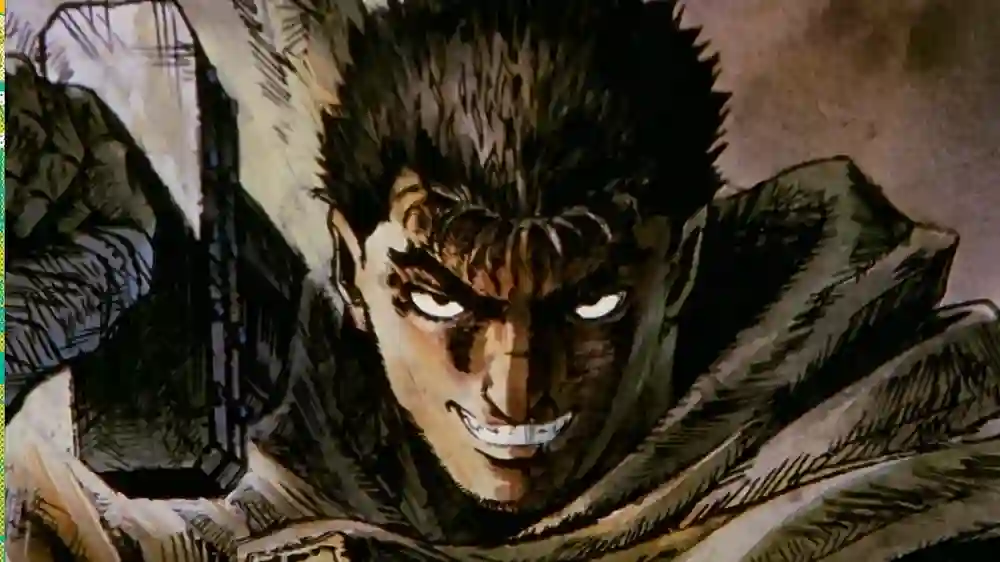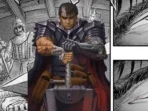Kentaro Miura’s magnum opus, Berserk, stands as a monumental work within the realm of manga and anime, captivating audiences with its dark fantasy narrative and intricate characters. Yet, every creative masterpiece has its roots in inspiration, and Berserk is no exception. In this exploration, we delve into the influences that shaped Kentaro Miura’s creative vision, tracing the roots of Berserk to understand the eclectic mix of elements that contribute to its unique and captivating storytelling.
Medieval History and Literature:
One of the prominent influences on Berserk is the rich tapestry of medieval history and literature. Miura draws upon the aesthetics, social structures, and political intrigues of the medieval period to craft the world in which Berserk unfolds. The architecture, weaponry, and societal hierarchies within the series echo the gritty realism of historical medieval settings, immersing readers in a world where knights, mercenaries, and political machinations take center stage.
Miura’s meticulous attention to detail in depicting medieval elements contributes to the authenticity of Berserk’s setting. From the imposing castles to the intricacies of armor and weaponry, the series pays homage to the historical and literary traditions that have long fascinated audiences.
Classic Literature and Mythology:
Berserk exhibits a profound engagement with classic literature and mythology, incorporating themes, motifs, and archetypes that resonate with the timeless narratives of the past. The series draws on literary traditions ranging from Shakespearean tragedy to Greek mythology, infusing the narrative with a sense of grandeur and universal resonance.
The tragic dimensions of characters like Guts and Griffith, the moral ambiguity explored throughout the series, and the cosmic horror elements are reminiscent of classical literature’s exploration of the human condition. Miura’s narrative craftsmanship echoes the works of literary giants, enriching Berserk with layers of depth that transcend the boundaries of genre fiction.
Dark Fantasy and Horror:
Miura’s deep appreciation for dark fantasy and horror is evident throughout Berserk. The series embraces the macabre, the supernatural, and the grotesque, creating a world where demonic entities, eldritch horrors, and nightmarish landscapes coexist with mortal struggles. The influence of classic horror literature, such as the works of H.P. Lovecraft, is discernible in the cosmic horror elements that permeate Berserk’s narrative.
The visual language of Berserk, characterized by detailed and often visceral illustrations, aligns with the traditions of horror artistry. Miura’s ability to evoke a sense of dread and awe through his depictions of demons, Apostles, and supernatural occurrences adds a layer of terror that resonates with fans of the horror genre.
Japanese Manga and Anime Traditions:
While Berserk draws inspiration from global literary and historical traditions, it also remains deeply rooted in the conventions of Japanese manga and anime. Miura’s artistry and storytelling techniques showcase a mastery of the manga medium. The dynamic action sequences, intricate character designs, and panel layouts are a testament to Miura’s understanding of the visual language that defines manga.
Berserk’s influence on the manga and anime industry is reciprocal, as it has, in turn, inspired subsequent creators to explore darker, more mature themes within the medium. Miura’s ability to blend the distinct styles of both Western and Japanese storytelling traditions contributes to the series’ cross-cultural appeal and has solidified its place as a seminal work in the manga canon.
Historical Art and Renaissance Paintings:
Miura’s background in art and his appreciation for historical artwork are evident in the meticulous detail and composition of Berserk’s illustrations. The series’ visuals reflect a fusion of medieval aesthetics with the grandeur of Renaissance paintings. From the sprawling battlefields to the hauntingly beautiful depictions of supernatural entities, Berserk’s visual style pays homage to the timeless works of art that have shaped the course of artistic history.
The use of chiaroscuro, the interplay of light and shadow, adds a dramatic and atmospheric quality to Berserk’s visuals, reminiscent of the techniques employed by Renaissance painters like Caravaggio. Miura’s ability to convey emotion and depth through his art draws from the same well of artistic inspiration that has fueled centuries of creative expression.
Conclusion:
Tracing the roots of Berserk reveals a rich tapestry of influences that have shaped Kentaro Miura’s creative vision. From the depths of medieval history and literature to the heights of classical mythology and art, Berserk stands as a synthesis of diverse inspirations. Miura’s ability to weave these influences into a narrative that is both timeless and innovative has elevated Berserk beyond the confines of its genre, leaving an indelible mark on the landscape of manga and anime. As fans continue to immerse themselves in the dark fantasy epic, they embark on a journey through the echoes of literary, historical, and artistic traditions that converge in the tragic beauty of Berserk.







